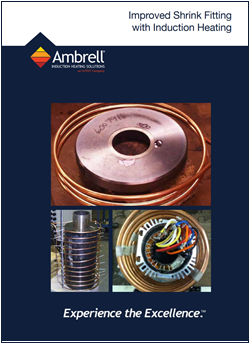Induction Brazing an Aluminum Assembly
Objective A company wanted to assess using induction heating for their aluminum assembly brazing process, and contacted THE LAB at Ambrell to utilize...
Applications
Applications: More
Applications: More

Industries:
Industries: More
Industries: More
Industries: More

Products:
Products: More
Services:
Services: More

Learn:
Learn: More
About:


We're pleased to announce that a new brochure which highlights induction shrink fitting is now available. This brochure, which is titled "Improved Shrink Fitting with Induction Heating," highlights ten shrink fitting applications that were tested by THE LAB at Ambrell. It also discusses what shrink fitting is and why induction is often a good heating choice for the application.
Our new shrink fitting brochure highlights the following applications:
Here's an excerpt about shrink fitting from the brochure:
Metals typically expand when heated and contract when cooled. This response to a change in temperature is known as thermal expansion. With induction shrink fitting, you use thermal expansion to fit or remove parts. A metal component is heated to 150-300 °C (305-572 °F), and that causes it to expand. This allows for the removal or insertion of a part.
For example, for disassembly, induction is used to create thermal expansion to loosen the joint. For assembly, one part might be heated until its diameter expands sufficiently for it to fit over the other part of the assembly. Then, the heated part cools and the joint is strong, which is “shrink fitting.” A wide array of metals are used when shrink fitting, whether it’s steel-to-steel, steel-to-copper, aluminum-to-steel, etc.
Click the button below to download our new brochure today:

Objective A company wanted to assess using induction heating for their aluminum assembly brazing process, and contacted THE LAB at Ambrell to utilize...

Induction heating is a process that uses electromagnetic fields to heat electrically conductive materials. It has been used in numerous industries...

Induction heating, a process that uses electromagnetic induction to heat electrically conductive materials, is often thought of for large industrial...